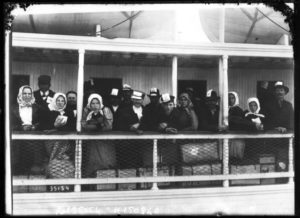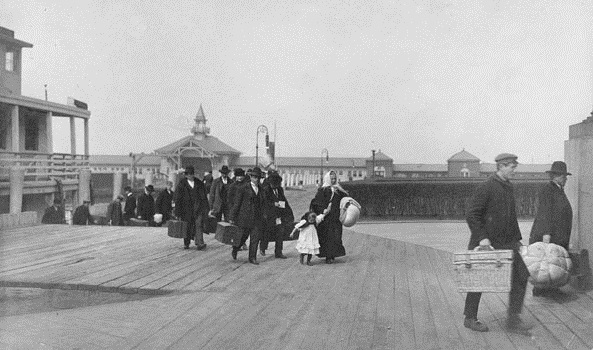Inside the Guide: Tips for Basic Danish Research
My paternal grandfather crossed the ocean from Copenhagen, Denmark to North America with his family when he was only two years old. Family tradition states that he got so sick on the voyage, that the crew thought they should just throw him overboard to the fishes. While I am eternally grateful that didn’t happen, I’ve considered doing the same thing with my Danish family history research at times. Even though over 25% of my family tree is Danish, I often found myself avoiding performing research for them, because I didn’t even know where to begin. If you have Scandinavian or Danish ancestry and don’t speak the language, I’m sure you know the feeling too. After taking a course on basic Scandinavian research, I was able to gain some confidence in performing very basic research for my Danish ancestors.
family when he was only two years old. Family tradition states that he got so sick on the voyage, that the crew thought they should just throw him overboard to the fishes. While I am eternally grateful that didn’t happen, I’ve considered doing the same thing with my Danish family history research at times. Even though over 25% of my family tree is Danish, I often found myself avoiding performing research for them, because I didn’t even know where to begin. If you have Scandinavian or Danish ancestry and don’t speak the language, I’m sure you know the feeling too. After taking a course on basic Scandinavian research, I was able to gain some confidence in performing very basic research for my Danish ancestors.
Here are a few things to help you get started on basic Danish family history research.
- Learn basic Danish words found on records. You don’t have to be able to speak Danish to understand Danish records. Just learning key words or phrases can help you decipher what the records mean. For example, if you came across a Danish record and noticed words such as Fader (father), Moder (mother), Drengebarn/Gossebarn (male child), Pigebarn/Flickebarn (female child), Fødte/Född (born), Døpte/Döpte (christened), you would be able to understand that it was a birth or christening record. Knowing the basic keywords that may be found on each important record type can help you identify what type of record the document is and help you analyze the information in the record. You can find more information on Danish words for genealogy in the Denmark country page of The Family History Guide, Goa1 1, Choice B.
- Recognize naming patterns. Traditional patronymics were typically used in Denmark until about 1860. Instead of everyone in the family having the same surname, a child would be known as a son or a daughter of the man who was their father. For example:
- If the father’s first name was Christian, his daughter’s surname would be Christiansdotter and his son’s surname would be Christianson.
- If the father’s first name was Jens, his son’s surname would be Jenson and his daughter’s surname would be Jensdotter.
These naming patterns can be helpful for family history research because they provide a clue of what the first name of an individual’s father was.
- Know where to search. In addition to FamilySearch and Ancestry, I found two additional sites that were helpful for conducting Danish research. They include https://www.danishfamilysearch.com and https://www.sa.dk/en/
- Pay attention to dates. When I was doing research on one of my Danish ancestors, I observed that Scandinavian research can prove to be challenging due to the fact that several people all have similar first names and surnames. Looking at dates and family relationships proved to be key in determining whether the people in the records were the same family that was being searched for.
Danish family research may take you out of your comfort zone, but with a little extra dedication you can feel comfortable conducting research for your Danish ancestors.
For additional resources for Danish family history research, visit The Family History Guide, Countries, Scandinavia, Denmark.






